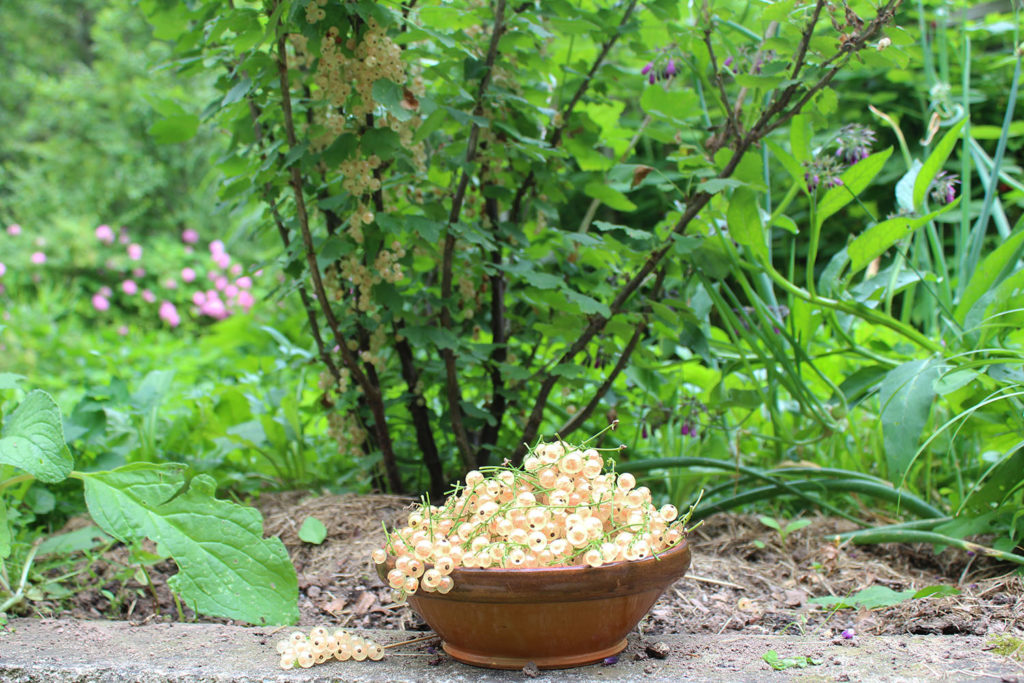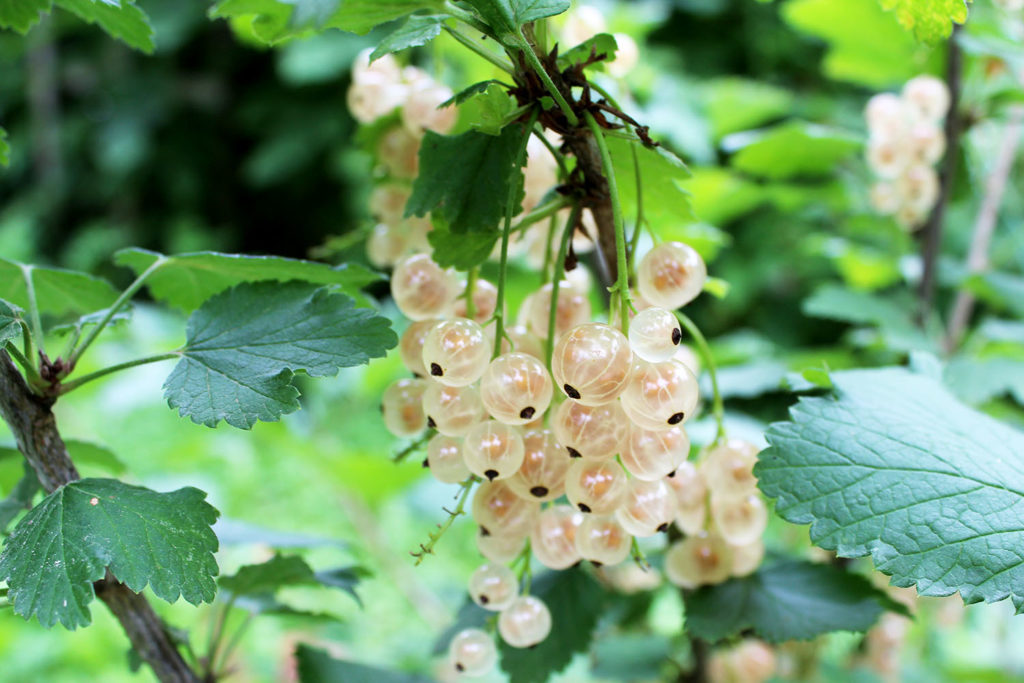After my blueberry post I’ve decided to write about another homegrown berry species. Today I’ll be writing about red, white and black currant. One of the most widespread but at the same time often overlooked species of berries in the home garden. Currant plants can be found in many Slovenian gardens. It seems that many people don’t know how to use the currant berries, because of their tart taste. Currant is therefore less popular than its other distant relatives from the berry family. I also quietly blame the modern media for the unpopularity of currants – we are constantly told how healthy the berries are for us, but most commonly mentioned are strawberries and raspberries, despite the fact that the currant is in fact a real bomb of vitamins, minerals and antioxidants. In addition it’s also ridiculously easy to grow and care for.

Black, red and white currant
The most commonly know are three types of currant: red, black and white currant. There are two bushes in my garden: red and white currant variety, so I will mainly talk about these two, or better yet one species. White currant is actually just an albino version of red currant. White currant has therefore very similar nutritional value than redcurrant. First of all, let me admit that I was not big on currants for a long time.
When I was still living with my parents, every year, when the redcurrant berries began to turn red, I picked a cluster or two and tried them optimistically in hope that they were not really so sour as I remembered from the previous season. And every year I was disappointed. Redcurrant was sour and tart and after my bitter-ended tasting I still had to harvest all the redcurrant clusters and separate the berries from the stalks. My mom would then freeze the berries and use them in a sauce accompanied by other berry varieties or she would make redcurrant jam. In the end, me and mom were the only two eating the redcurrant jam. Mom ate it because she enjoyed the taste and I ate it because I knew how much work went into it. 🙂

The secret of tasty redcurrants
I began to really enjoy currant berries a couple of years ago when I moved to House by the woods and my mom brought me two currant shrubs- one was a redcurrant and the other was a white currant variety. I planted the shrubs on the edge of the garden and forgot about them. They started bearing fruit the next year. I noticed that both varieties had the right color and were ready for harvesting, but I didn’t have the time to pick them immediately. Redcurrant berries became dark red over time and whitecurrant berries became slightly yellowish when I finally remembered about the plants. I was pleasantly surprised when I tasted them – the currant was much sweeter than I remembered!
Since then, I wait patiently for the redcurrant berries to be dark red and whitecurrant berries to be yellowish-white before I harvest them. This is how I make sure that the currant berries are fully ripe and taste good before the harvest.
How do we grow red and whitecurrant?
I planted both my currant shrubs in a hole that I filled with decomposed manure before planting. I planted the shrubs a little deeper than they were planted in a pot to encourage the growth of new shots. Every spring I add some decomposedmanure to every currant shrub and add extra layer of soil to the bottom of the shrub. This is also supposed to promote the growth of new shoots. I mulch the currants during the growing season because the mulch helps to retain the moisture in the soil which is important, as I don’t have any watering system in place were the currant shrubs are planted. I trim away any branches that are older than four years and prune the younger shots as well to promote new growth.

Preparation and storage
I use redcurrant as well as whitecurrant berries in summer desserts because they add sweet-acidic freshness to them. During the winter I use frozen currant berries in smoothies.
Short Red and white currant ID:
Special growing needs: spreading soil ot the bottom of the shrub to encourage the growth of new shots.
Adult plant height: about 1.5m
Storing the currants: freezing, jams, syrups
Why would you want to consume currants? Currants are full of vitamins (especially vitamin C, as well as vitamin B6 which facilitates the formation of new skin cells) and minerals (potassium, magnesium and iron)
Conclusion: Refreshing and unpretentious fruits for hot summer months.:)

No Comments